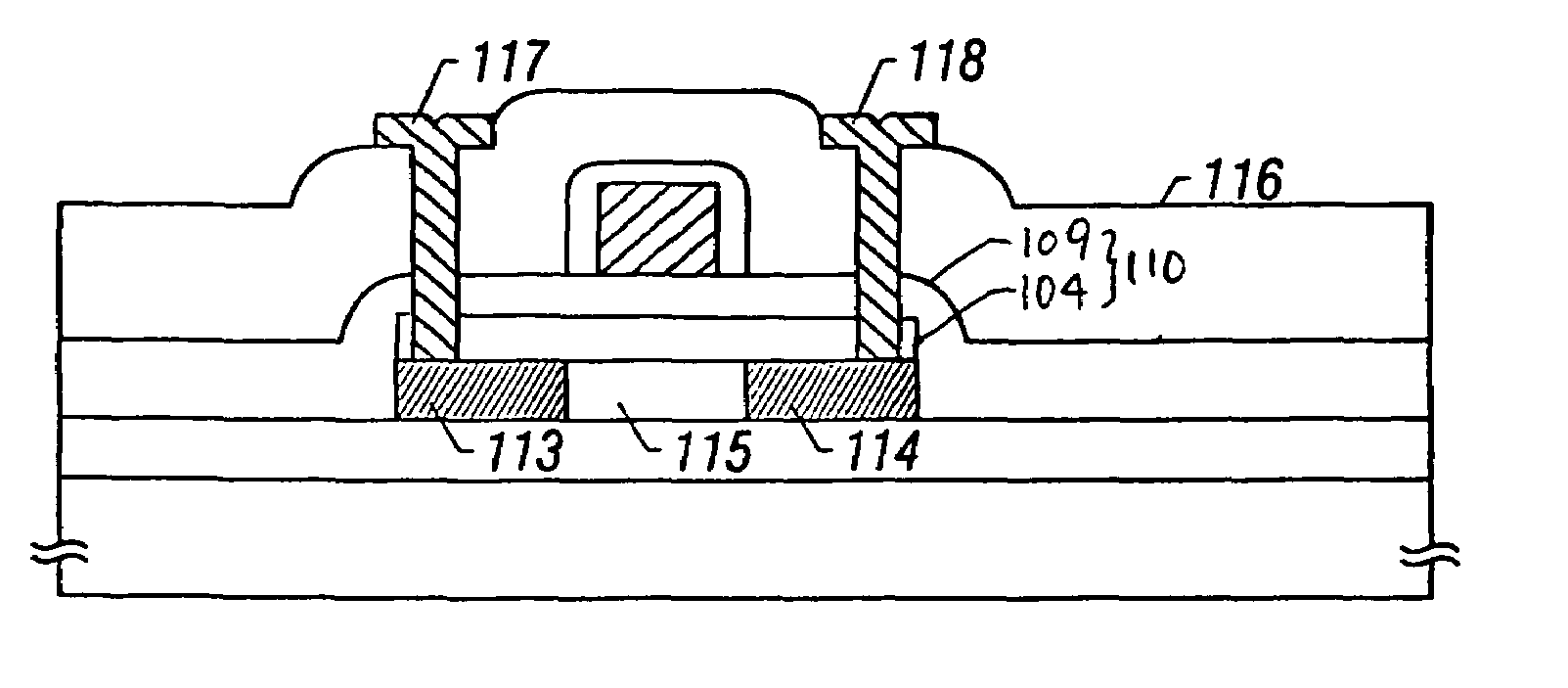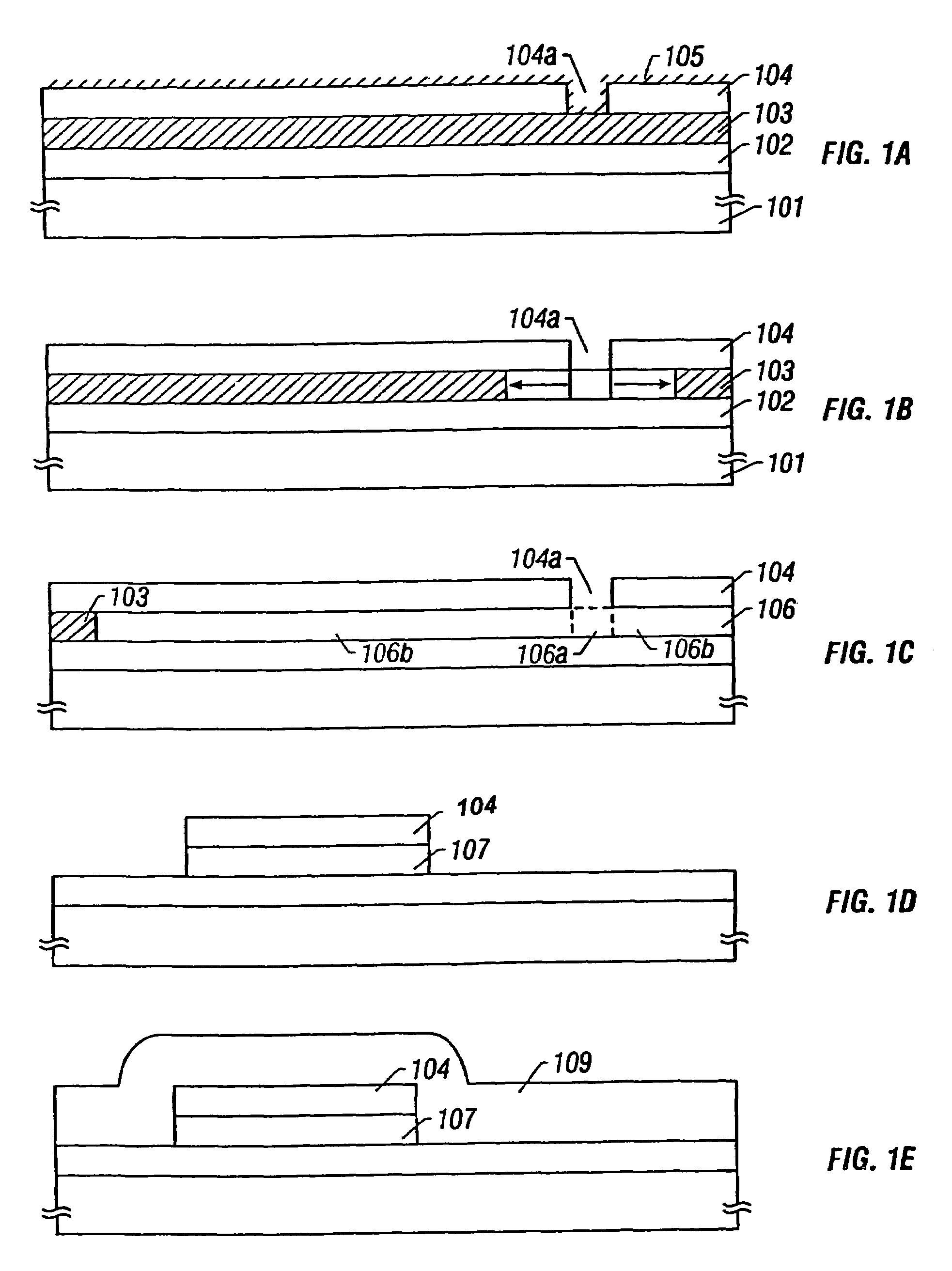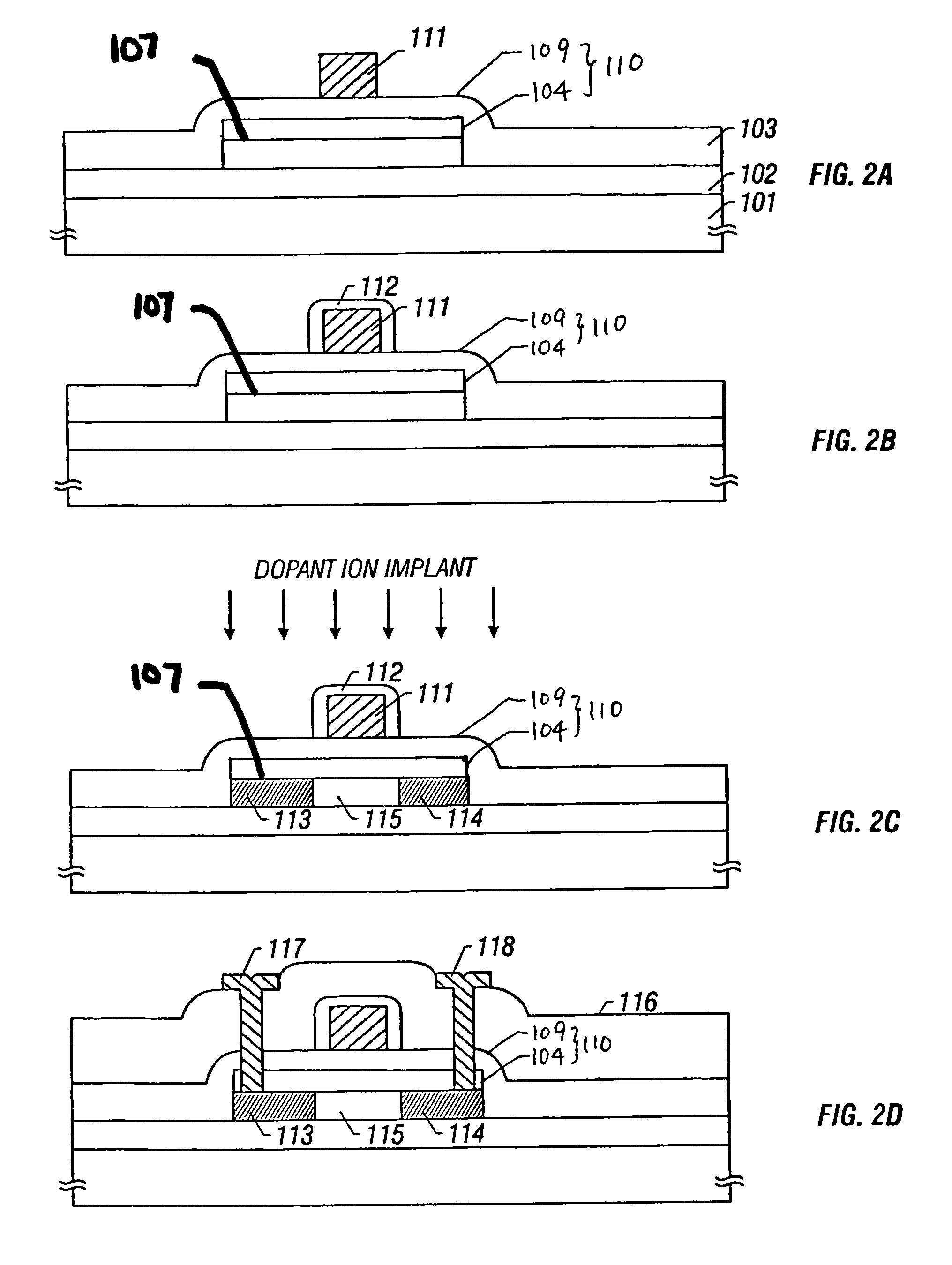Method of fabricating semiconductor devices
- Summary
- Abstract
- Description
- Claims
- Application Information
AI Technical Summary
Benefits of technology
Problems solved by technology
Method used
Image
Examples
example 1
[0047]FIGS. 1(A)-1(E) and 2(A)-2(D) are cross-sectional views illustrating the process sequence for fabricating a thin-film transistor (TFT) of the present example. In the present example, a silicon film is crystallized by using a solution containing nickel.
[0048]As shown in FIG. 1(A), a silicon oxide film is formed as a buffer layer 102 on a glass substrate 101 to a thickness of 3000 Å by sputtering techniques. Then, an amorphous silicon film 103 is formed on the buffer layer to a thickness of 500 Å by plasma CVD or LPCVD.
[0049]The surface of the amorphous silicon film 103 is oxidized to form a thin oxide film (not shown) having a thickness of about 10 to 50 Å. This thin oxide film improves the surface characteristics of the amorphous silicon film 103. The silicon film 103 no longer repels aqueous solution. In the present example, the laminate is illuminated with ultraviolet radiation in an oxygen ambient to form a thin oxide film (not shown) to a thickness of 20 Å.
[0050]Then, a si...
example 2
[0065]FIGS. 3(A)-3(F) and 4(A)-4(F) are cross-sectional views illustrating a process sequence for fabricating a TFT according to Example 2. As shown in FIG. 3(A), a glass substrate 201 made of Corning 1737 or Corning 7059 is prepared, and a silicon oxide film is formed as a buffer layer 202 on the substrate to a thickness of 1000 to 5000 Å, e.g., 1200 Å. Then, an amorphous silicon film 203 is formed to a thickness of 500 Å by plasma CVD. Preferably, the buffer layer 202 and the amorphous silicon film 203 are formed in succession.
[0066]Subsequently, a silicon thermal oxide film 204 is formed on the surface of the amorphous silicon film 203 to a thickness of tens of angstroms. The thermal oxidation conditions such as ambient and pressure may be appropriately selected. However, it is necessary to control the heating temperature and heating time in such a way that the amorphous silicon film 203 is not crystallized and that the glass substrate 201 is not deformed. The characteristics of ...
example 3
[0091]The present example is described by referring to FIGS. 1(A)-1(E). As shown in FIG. 1(A), a silicon oxide film is formed as a buffer layer 102 on a glass substrate 101 to a thickness of 3000 Å by sputtering techniques. Then, an amorphous silicon film 103 is formed on the buffer layer to a thickness of 500 Å by plasma CVD or LPCVD.
[0092]Then, a silicon oxide film 104 is formed by plasma CVD or LPCVD. Preferably, the buffer layer 102, the amorphous silicon film 103, and the silicon oxide film 104 are formed in succession. Because the interface between the amorphous silicon film 103 and the silicon oxide film 104 is retained as it is until the final TFT is completed, and because the characteristics of this interface affect the characteristics of the TFT, it is necessary to form the amorphous silicon film 103 and the silicon oxide film 104 with special care.
[0093]Then, a rectangular hole 104a extending normal to the plane of the figure is formed in the silicon oxide film 104 by a w...
PUM
 Login to View More
Login to View More Abstract
Description
Claims
Application Information
 Login to View More
Login to View More - R&D
- Intellectual Property
- Life Sciences
- Materials
- Tech Scout
- Unparalleled Data Quality
- Higher Quality Content
- 60% Fewer Hallucinations
Browse by: Latest US Patents, China's latest patents, Technical Efficacy Thesaurus, Application Domain, Technology Topic, Popular Technical Reports.
© 2025 PatSnap. All rights reserved.Legal|Privacy policy|Modern Slavery Act Transparency Statement|Sitemap|About US| Contact US: help@patsnap.com



